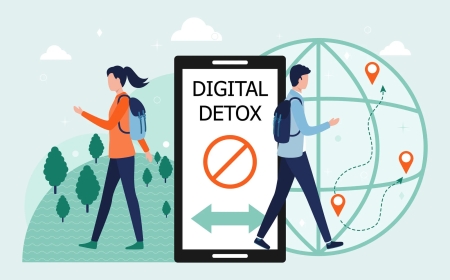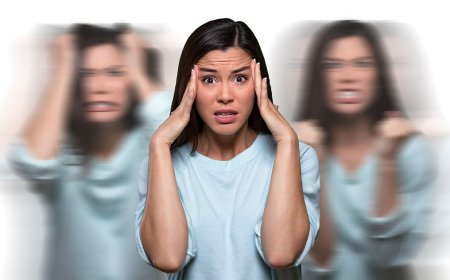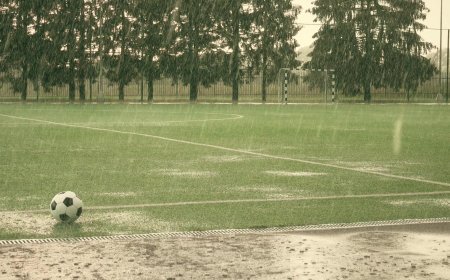Breathe If You Can: Delhi’s Toxic Air Linked to 15% of All Deaths
Delhi toxicity reaches crisis levels with air pollution now linked to 15% of all deaths in the city.
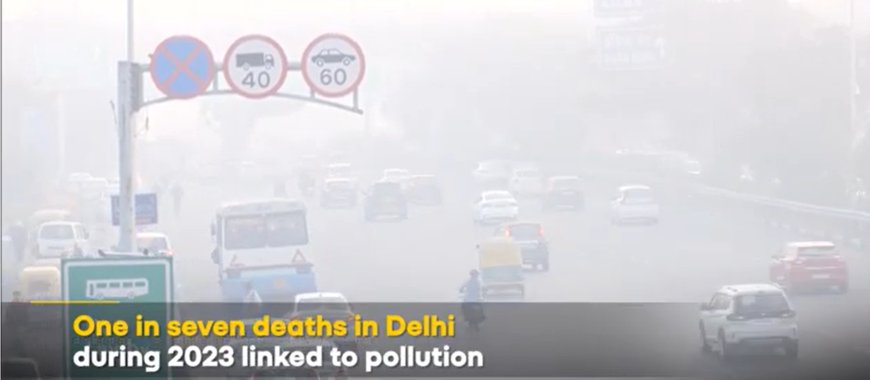
The Numbers Are Brutal
Delhi toxicity isn't news anymore - it's just reality now. But seeing it quantified hits different. Air pollution accounts for approximately 15% of deaths in Delhi. That's roughly 1 in 7 people dying partly because the air they breathe is poisonous.
A human is more likely to die from breathing in Delhi's air as compared to car accidents in most places. The pollution deaths add up to tens of thousands yearly. And it's not quick - it's slow damage to lungs, hearts, and brains over time.
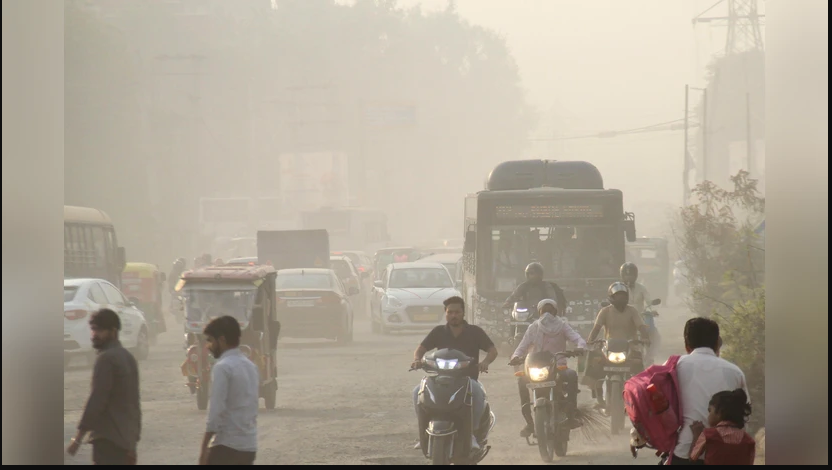
Winter makes it worse. Every year around November the air quality index shoots into "hazardous" territory and stays there for months. You can see the smog. Taste it. Schools close. People develop breathing problems. But life mostly continues because what else can you do?
What's Actually Causing This
Delhi toxicity comes from everywhere. Crop burning in neighboring states sends smoke into the city. Construction dust never settles. Millions of vehicles pump out exhaust. Coal plants and factories add industrial pollution. Garbage burning happens constantly. Firecrackers during festivals spike things even worse.
It's not one problem you can fix. It's dozens of problems compounding. And they're tied to economics - farmers burn crops because it's cheapest. People drive because public transport's overcrowded. Construction continues because the city's growing. Fixing any piece means changing how millions of people work and live.
Main sources of Delhi toxicity:
- Punjab and Haryana’s crop stubble burning
- Vehicle emissions from countless cars and trucks
- Construction dust from constant building projects
- Industrial pollution from factories
- Open garbage burning across the city
- Coal-based power generation nearby
Health impacts hitting residents:
- Lung diseases and breathing problems
- Heart disease and strokes
- Developmental issues in children
- Cancer risks increasing over time
- Reduced life expectancy overall
Government Tries Stuff That Doesn't Work
They've tried solutions. Odd-even vehicle rules where cars can only drive certain days. Banning construction during peak pollution. Shutting down coal plants. Fining people for burning garbage. Installing air purifiers in schools.
Winter makes it worse. Every year around November the air quality index shoots into "hazardous" territory and stays there for months. You can see the smog. Taste it. Schools close. People develop breathing problems. But life mostly continues because what else can you do?
What's Actually Causing This
Delhi toxicity comes from everywhere. Crop burning in neighboring states sends smoke into the city. Construction dust never settles. Millions of vehicles pump out exhaust. Coal plants and factories add industrial pollution. Garbage burning happens constantly. Firecrackers during festivals spike things even worse.
It's not one problem you can fix. It's dozens of problems compounding. And they're tied to economics - farmers burn crops because it's cheapest. People drive because public transport's overcrowded. Construction continues because the city's growing. Fixing any piece means changing how millions of people work and live.
Main sources of Delhi toxicity:
- Punjab and Haryana’s crop stubble burning
- Vehicle emissions from countless cars and trucks
- Construction dust from constant building projects
- Industrial pollution from factories
- Open garbage burning across the city
- Coal-based power generation nearby
Health impacts hitting residents:
- Lung diseases and breathing problems
- Heart disease and strokes
- Developmental issues in children
- Cancer risks increasing over time
- Reduced life expectancy overall
Government Tries Stuff That Doesn't Work
They've tried solutions. Odd-even vehicle rules where cars can only drive certain days. Banning construction during peak pollution. Shutting down coal plants. Fining people for burning garbage. Installing air purifiers in schools.
Nothing makes a big enough dent. The pollution deaths keep climbing. Delhi toxicity stays in the "very poor" to "severe" range most of winter. Some days it hits levels 20-30 times what WHO considers safe. That's not slightly bad air - that's comparable to smoking cigarettes just by existing outside.
The crop burning is the hardest piece politically. It's farmers in other states making decisions that poison Delhi's air. The city can't really stop them. The states won't because farmers vote. Meanwhile millions in Delhi suffer the consequences of agricultural practices they have no control over.
Face masks became common even before COVID. Air purifiers are in every middle-class home. Schools have air-filtered rooms. But that's only for people who can afford protection.
Why This Isn't Getting Fixed
Here's the uncomfortable truth - fixing Delhi toxicity requires political will nobody's showing. It needs coordinated action across multiple states. It means telling farmers to change practices and compensating them. Restricting vehicles in a city dependent on cars. Overhauling construction standards. Cleaning up industry. All of it costs money and votes.

Winter makes it worse. Every year around November the air quality index shoots into "hazardous" territory and stays there for months. You can see the smog. Taste it. Schools close. People develop breathing problems. But life mostly continues because what else can you do?
What's Actually Causing This
Delhi toxicity comes from everywhere. Crop burning in neighboring states sends smoke into the city. Construction dust never settles. Millions of vehicles pump out exhaust. Coal plants and factories add industrial pollution. Garbage burning happens constantly. Firecrackers during festivals spike things even worse.
It's not one problem you can fix. It's dozens of problems compounding. And they're tied to economics - farmers burn crops because it's cheapest. People drive because public transport's overcrowded. Construction continues because the city's growing. Fixing any piece means changing how millions of people work and live.
Main sources of Delhi toxicity:
- Punjab and Haryana’s crop stubble burning
- Vehicle emissions from countless cars and trucks
- Construction dust from constant building projects
- Industrial pollution from factories
- Open garbage burning across the city
- Coal-based power generation nearby
Health impacts hitting residents:
- Lung diseases and breathing problems
- Heart disease and strokes
- Developmental issues in children
- Cancer risks increasing over time
- Reduced life expectancy overall
Government Tries Stuff That Doesn't Work
They've tried solutions. Odd-even vehicle rules where cars can only drive certain days. Banning construction during peak pollution. Shutting down coal plants. Fining people for burning garbage. Installing air purifiers in schools.
Nothing makes a big enough dent. The pollution deaths keep climbing. Delhi toxicity stays in the "very poor" to "severe" range most of winter. Some days it hits levels 20-30 times what WHO considers safe. That's not slightly bad air - that's comparable to smoking cigarettes just by existing outside.
The crop burning is the hardest piece politically. It's farmers in other states making decisions that poison Delhi's air. The city can't really stop them. The states won't because farmers vote. Meanwhile millions in Delhi suffer the consequences of agricultural practices they have no control over.
Face masks became common even before COVID. Air purifiers are in every middle-class home. Schools have air-filtered rooms. But that's only for people who can afford protection.
Why This Isn't Getting Fixed
Here's the uncomfortable truth - fixing Delhi toxicity requires political will nobody's showing. It needs coordinated action across multiple states. It means telling farmers to change practices and compensating them. Restricting vehicles in a city dependent on cars. Overhauling construction standards. Cleaning up industry. All of it costs money and votes.
Every government announces action plans. Sets targets. Makes promises. Then winter comes, pollution spikes, and nothing substantial changed. The 15% death rate statistic should be a massive scandal driving urgent action. Instead it's just another headline people get numb to.
Rich people can partially escape - air purifiers at home, masks outside, moving to less polluted neighborhoods or other cities entirely. Poor people are stuck breathing the worst air pollution with the least access to healthcare. It's environmental injustice playing out in real time through pollution deaths.
What Actually Needs to Happen
Fixing Delhi toxicity needs stuff that's politically hard but not technically impossible. Pay farmers not to burn crops or provide cheap alternatives. Massively expand metro and bus systems so cars aren't necessary. Enforce emission standards strictly. Move heavy industry away from populated areas. Fund transition from coal to cleaner energy.
It also needs regional cooperation since air pollution doesn't respect city boundaries. That means Delhi, Punjab, Haryana, and Uttar Pradesh governments working together instead of blaming each other. Good luck with that given India's political landscape.
The 15% death statistic should be a wake-up call. It won't be, because this has been crisis-level for years and inertia's powerful. But maybe it shifts the conversation slightly. Maybe more people demand action. Maybe politicians feel enough pressure to actually do something beyond token gestures.
Every government announces action plans. Sets targets. Makes promises. Then winter comes, pollution spikes, and nothing substantial changed. The 15% death rate statistic should be a massive scandal driving urgent action. Instead it's just another headline people get numb to.
Rich people can partially escape - air purifiers at home, masks outside, moving to less polluted neighborhoods or other cities entirely. Poor people are stuck breathing the worst air pollution with the least access to healthcare. It's environmental injustice playing out in real time through pollution deaths.
What Actually Needs to Happen
Fixing Delhi toxicity needs stuff that's politically hard but not technically impossible. Pay farmers not to burn crops or provide cheap alternatives. Massively expand metro and bus systems so cars aren't necessary. Enforce emission standards strictly. Move heavy industry away from populated areas. Fund transition from coal to cleaner energy.

It also needs regional cooperation since air pollution doesn't respect city boundaries. That means Delhi, Punjab, Haryana, and Uttar Pradesh governments working together instead of blaming each other. Good luck with that given India's political landscape.
The 15% death statistic should be a wake-up call. It won't be, because this has been crisis-level for years and inertia's powerful. But maybe it shifts the conversation slightly. Maybe more people demand action. Maybe politicians feel enough pressure to actually do something beyond token gestures.
Nothing makes a big enough dent. The pollution deaths keep climbing. Delhi toxicity stays in the "very poor" to "severe" range most of winter. Some days it hits levels 20-30 times what WHO considers safe. That's not slightly bad air - that's comparable to smoking cigarettes just by existing outside.
The crop burning is the hardest piece politically. It's farmers in other states making decisions that poison Delhi's air. The city can't really stop them. The states won't because farmers vote. Meanwhile millions in Delhi suffer the consequences of agricultural practices they have no control over.
Face masks became common even before COVID. Air purifiers are in every middle-class home. Schools have air-filtered rooms. But that's only for people who can afford protection.
Why This Isn't Getting Fixed
Here's the uncomfortable truth - fixing Delhi toxicity requires political will nobody's showing. It needs coordinated action across multiple states. It means telling farmers to change practices and compensating them. Restricting vehicles in a city dependent on cars. Overhauling construction standards. Cleaning up industry. All of it costs money and votes.
Every government announces action plans. Sets targets. Makes promises. Then winter comes, pollution spikes, and nothing substantial changed. The 15% death rate statistic should be a massive scandal driving urgent action. Instead it's just another headline people get numb to.
Rich people can partially escape - air purifiers at home, masks outside, moving to less polluted neighborhoods or other cities entirely. Poor people are stuck breathing the worst air pollution with the least access to healthcare. It's environmental injustice playing out in real time through pollution deaths.
What Actually Needs to Happen
Fixing Delhi toxicity needs stuff that's politically hard but not technically impossible. Pay farmers not to burn crops or provide cheap alternatives. Massively expand metro and bus systems so cars aren't necessary. Enforce emission standards strictly. Move heavy industry away from populated areas. Fund transition from coal to cleaner energy.
It also needs regional cooperation since air pollution doesn't respect city boundaries. That means Delhi, Punjab, Haryana, and Uttar Pradesh governments working together instead of blaming each other. Good luck with that given India's political landscape.
The 15% death statistic should be a wake-up call. It won't be, because this has been crisis-level for years and inertia's powerful. But maybe it shifts the conversation slightly. Maybe more people demand action. Maybe politicians feel enough pressure to actually do something beyond token gestures.
What's Your Reaction?
 Like
0
Like
0
 Dislike
0
Dislike
0
 Love
0
Love
0
 Funny
0
Funny
0
 Angry
0
Angry
0
 Sad
0
Sad
0
 Wow
0
Wow
0















































































































































































